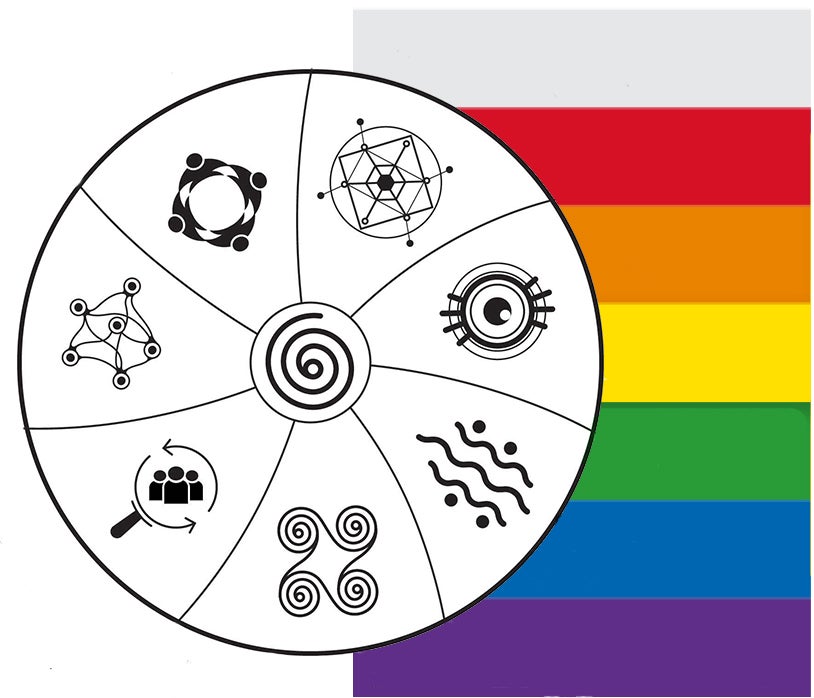This report is an example of a difference-in-differences (DiD) analysis (one option for investigating causal attribution and contribution) to assess the impact of the Bangladeshi Association for Life Skills, Income, and Knowledge for Adolescents (BALIKA) project. It is an example of a quasi-experimental design to create a counterfactual. In this case the difference-in-differences (DiD) analysis adjusted for three key sociodemographic characteristics: age, religion, and wealth quintile.
The Evaluating C4D Resource Hub sits within BetterEvaluation and houses a growing collection of the available guides, toolkits, tools and methods to use for research monitoring and evaluation (R,M&E) of Communication for Development (C4D) initiatives. The Hub is structured around two combined frameworks:

The BetterEvaluation Rainbow Framework (represented by the rainbows) is a structure. It organises the practical tasks into seven categories or 'clusters' and provides options.
While the resource recommendation below discusses the resource specifically in relation to its usefulness for evaluating C4D within the Evaluating C4D Resource Hub's C4D Framework, this resource may also be of use for people working in other contexts and with different frameworks.
Authors and their affiliation
Sajeda Amin, Johana Ahmed, Jyotirmoy Saha, MD. Irfan Hossain and Eashita Farzana HaqueYear of publication
2016
Type of resource
Example
Key features
The report includes the following sections
- A desk review on the contextual and other factors that contribute to the problem of Child Marriage. This review was used to inform a theory of change. Only a basic theory of change diagram is included in the report.
- The Research Design, including how districts and clusters were selected as either implementation districts or control districts. This section also provides an overview of the methods used. Surveys were the main method of measurement between the baseline and endline. Qualitative methods, including interviews, focus groups, and community assessment methods including transect walks were used to inform the design of the study.
- A discussion of the evidence for impacts of the Balika Program
Who is this resource useful for?
- Evaluators
- Program Officers, especially those working areas relating to child marriage
- Communication for Development practitioners
- Consultants
- Researchers
How have you used or intend on using this resource?
This example has been identified as particularly useful for evaluating of communication for development. It was identified as part of a research project in collaboration with UNICEF C4D, which had, as one area of interest, evaluation of C4D in the context of child marriage.
Why would you recommend it to other people?
This report would be valuable for teams considering using experimental or quasi-experimental designs to assess the impact of a program. It gives a good indication of the extent to which the implementation of the program needs to be adjusted to suit the needs of the research design (not vice versa, as is more often the case). It is relevant to C4D practitioners, since many of the program activities involve high levels of C4D-related approaches.
This example is consistent with the C4D Evaluation Framework in the following ways:
- holistic: the design of the research and program was based on a global literature review and extensive qualitative methods.
- accountable: quasi-experimental designs provide quantitative data, which is a valued form of evidence in development agencies to show that a program works and make a case for further investment.
- critical: because it is not a randomised-control-trial, the study allowed for the selection of sites based on high levels of need.
On the other hand, the C4D Evaluation Framework would suggest the need to consider the following issues:
- complexity: as with all experimental and quasi-experimental designs, this creation of a counterfactual in the design of the research initiative required standardised implementation, and therefore did not allow the flexibility for adaptive and emergent approaches to C4D to be used.
- participatory: experimental and quasi-experimental designs are generally not associated with participatory approaches, due to the need for standardisation and specific technical expertise.
Sources
Amin, S., Ahmed, J., Saha, J., Hossain, I. and Haque, E., Delaying child marriage through community-based skills-development programs for girls. Results from a randomized controlled study in rural Bangladesh.